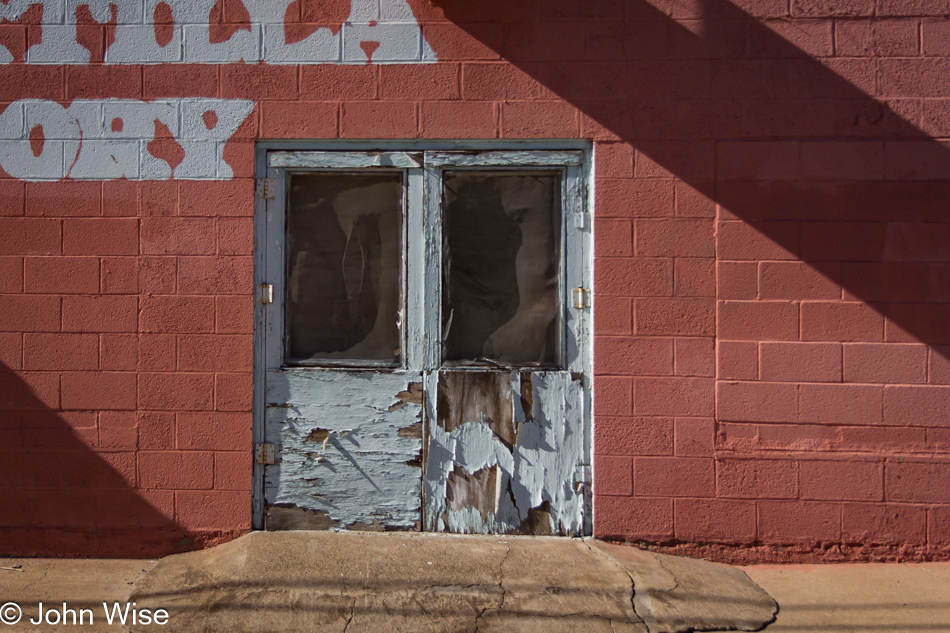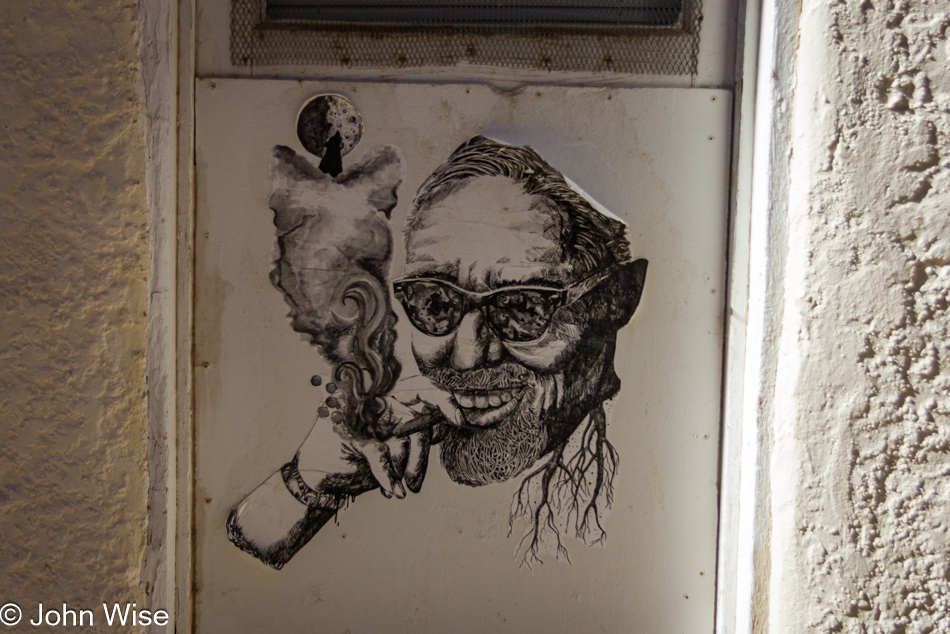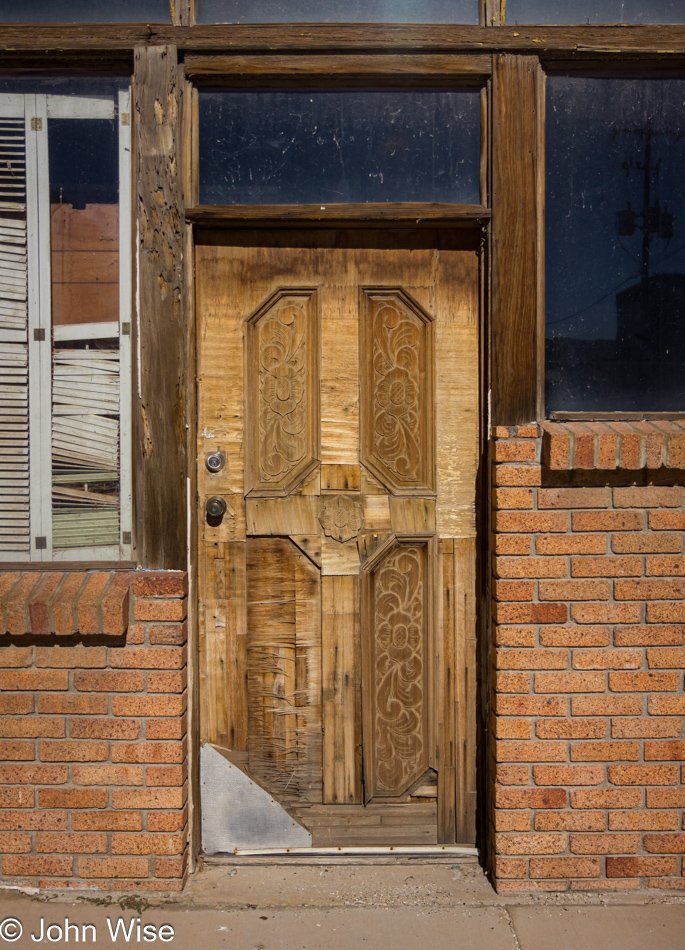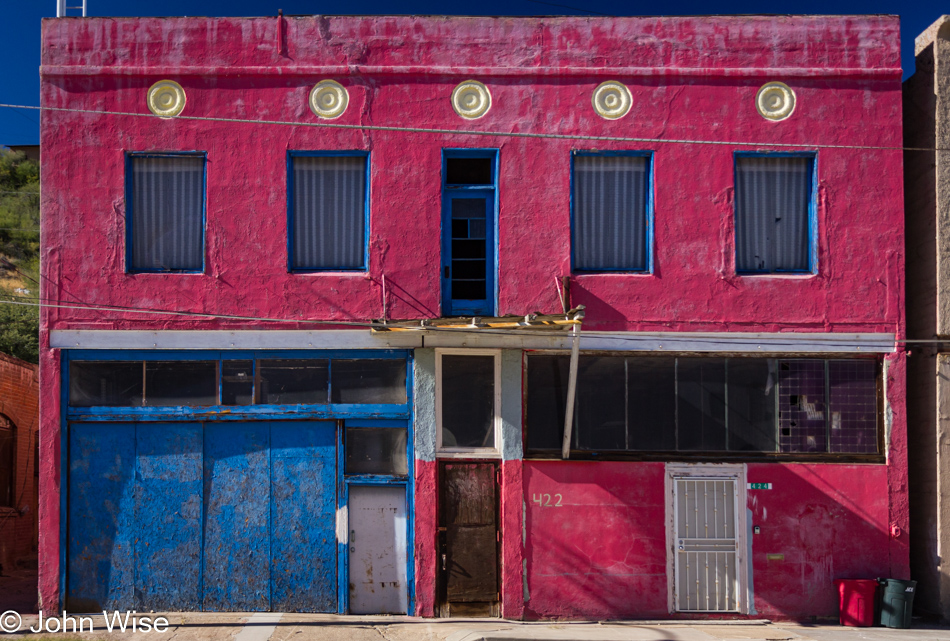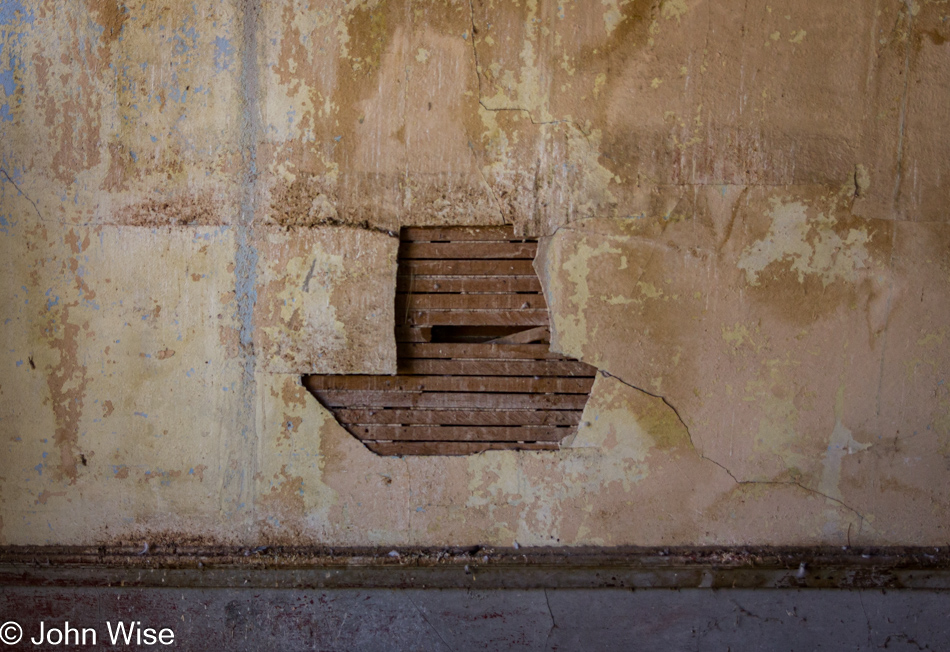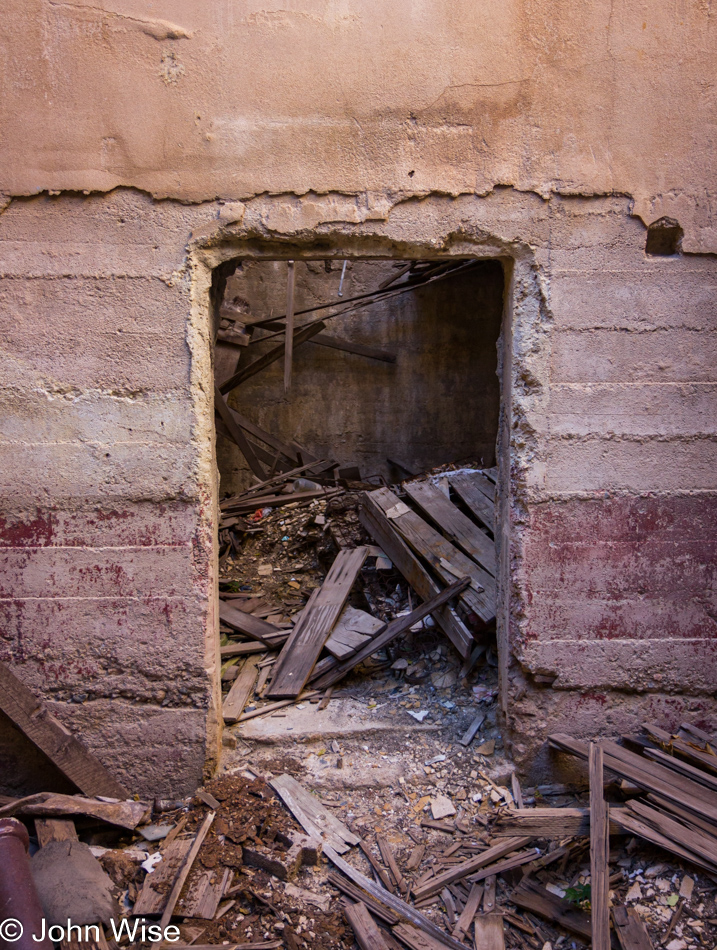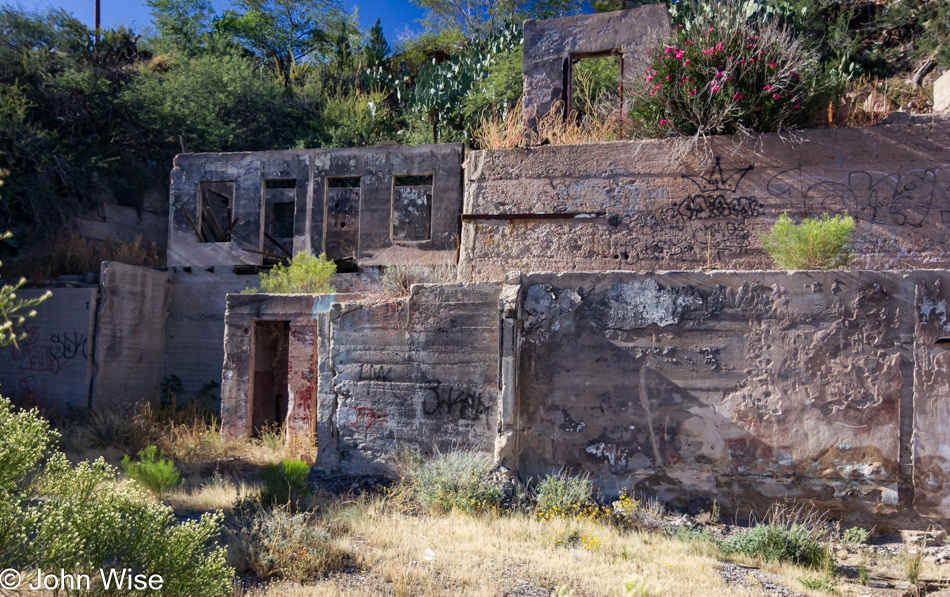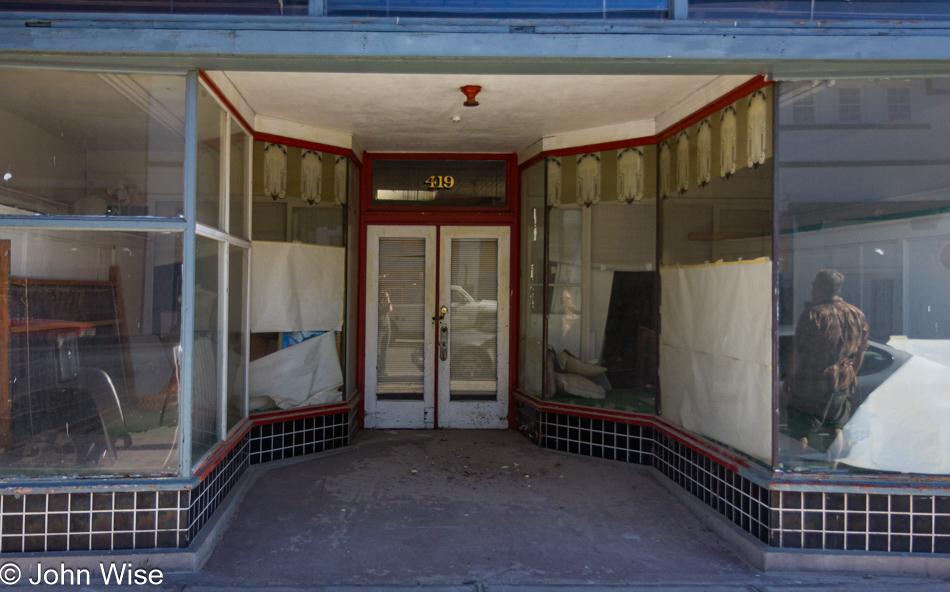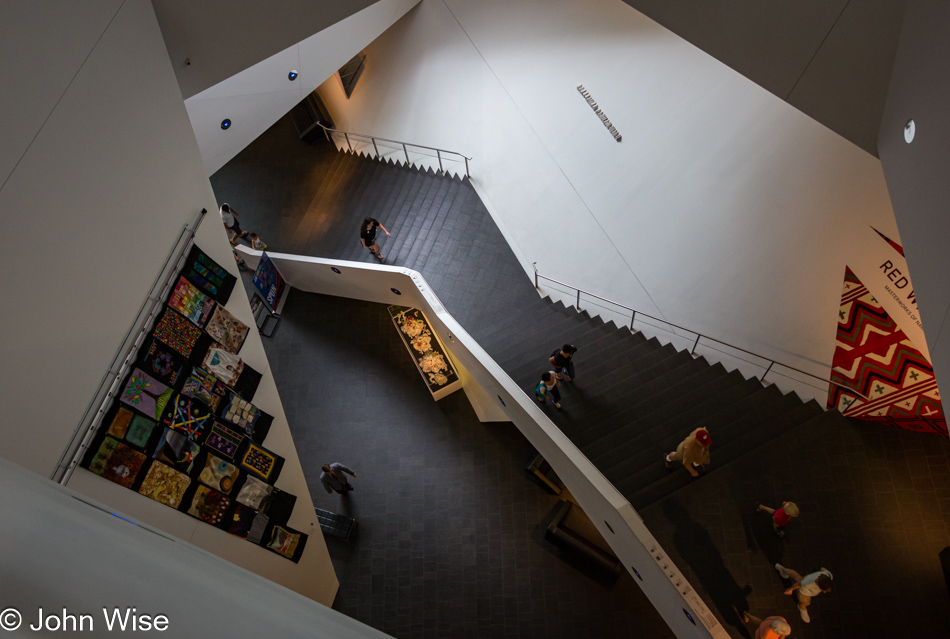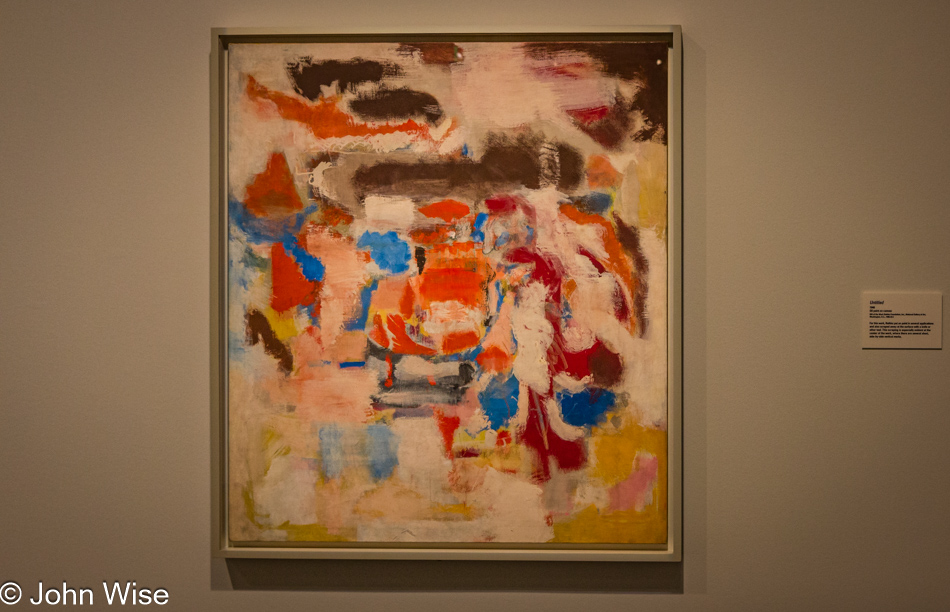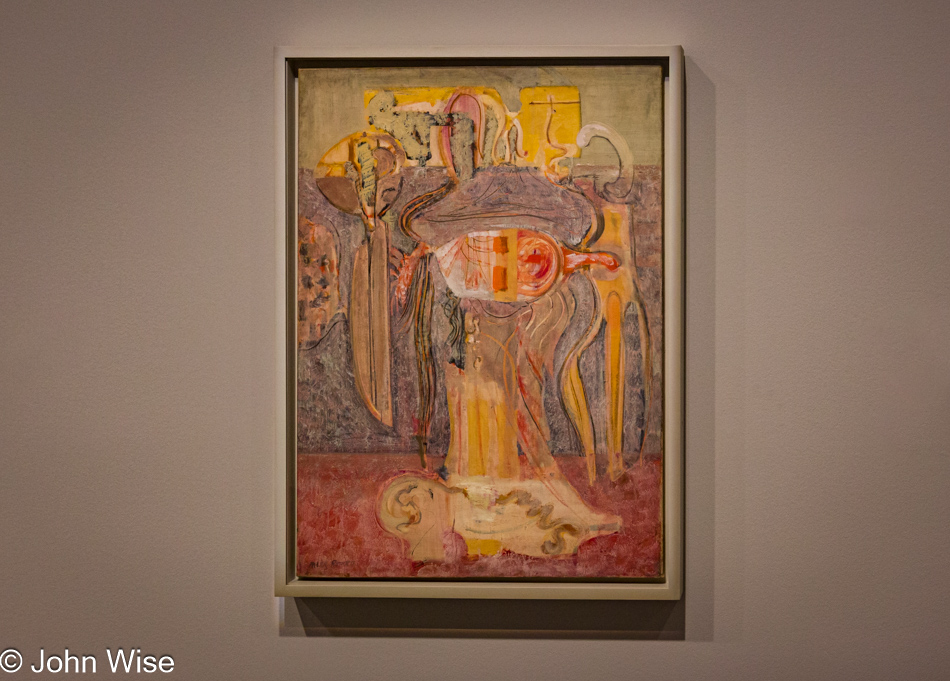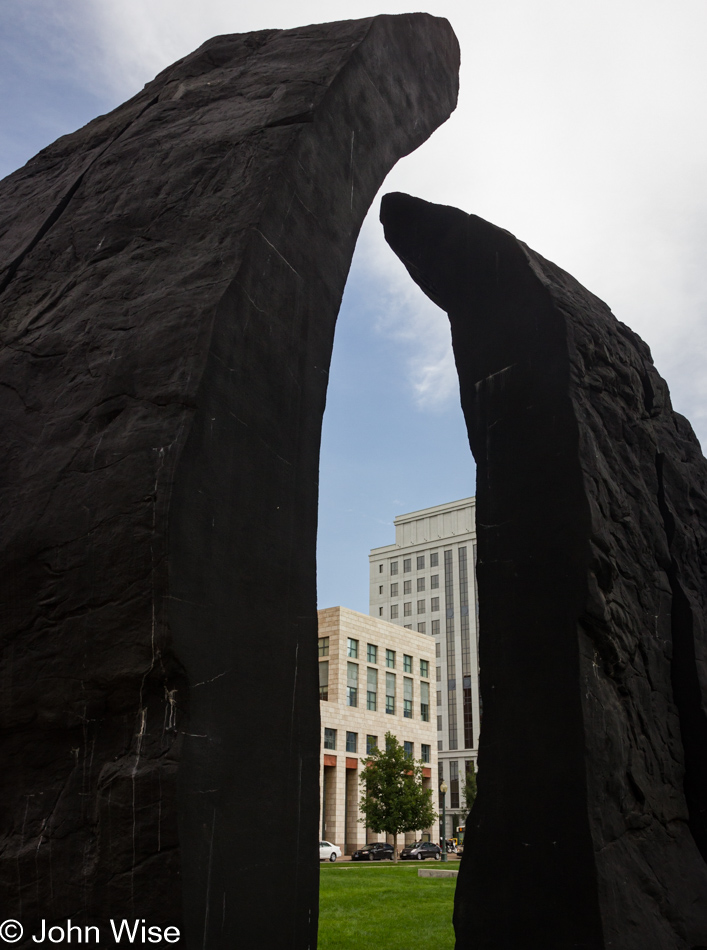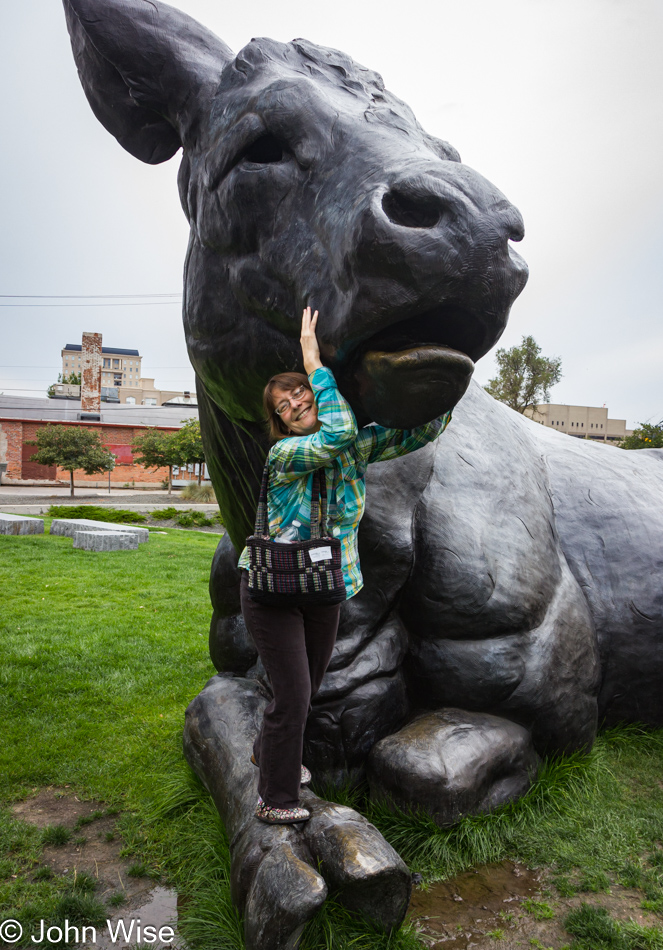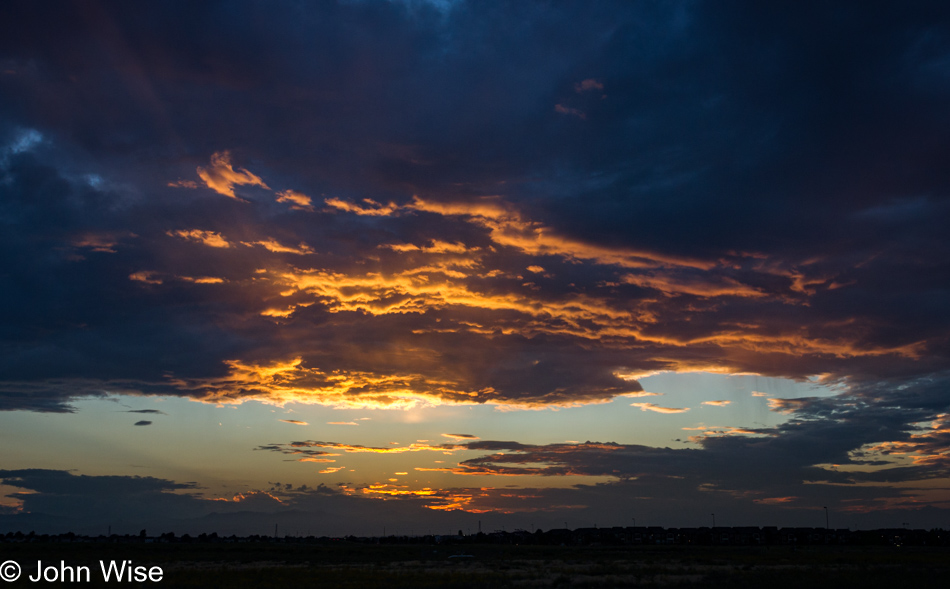
Before heading out of Denver this morning, I have another request from Caroline to satisfy, and that’s for us to visit the Denver Botanical Garden. You can rest assured that these orchids are not near our motel because our typical lodging arrangement is more likely to smell of cigarette smoke, stale beer, and a hint of urine and located where, at best, weeds might be growing. Where exactly we stayed is lost, lost, lost, as are many details about this trip to Denver because, once again, this is another of those posts that arise from a forgotten past when, for reasons beyond the timeline of active memory, there was nothing ever written or noted about this visit and so in 2023 I’m here at work trying to assemble something that might reflect relatively accurately about the events of the day.

Searching for something to say about the garden, there was a moment when I thought I wanted to claim it felt like cheating to photograph gardens and flowers as everything is already organized, but just as quickly as I entertained that idea, I realized that photographing anything is in essence configured in a similar way as whatever the subject matter aside from people and animals, the scene is presented as the scene is. Still, there’s something that has me feeling like I’m adding filler with no valuable caloric content, just sugary convenience.
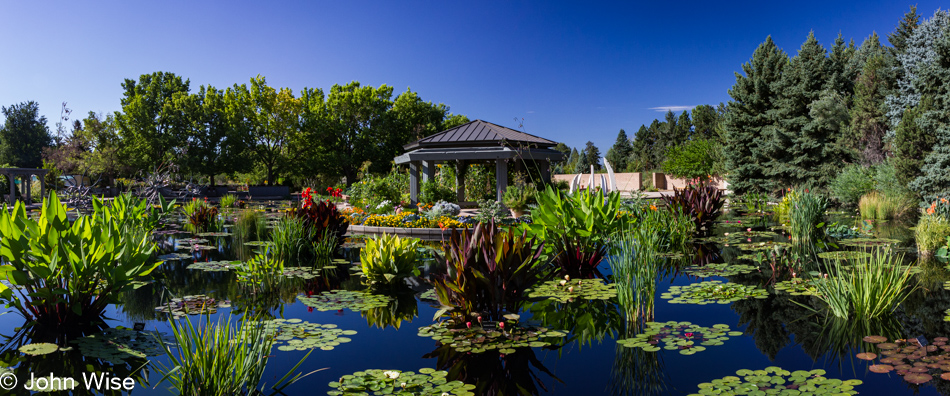
I spent nearly 90 minutes writing the previous two paragraphs, which could be more time than we even spent in the garden; such is the nature of scouring a mind, looking for any hint of impressions that might have been made a decade earlier. One could be wondering what the importance is of backfilling this stuff, and my answer is that without the photos up here, they are lost in the depths of my hard drive where we rarely, if ever, look back at the photos occupying those magnetic particles. Take this post where I’m sharing 17 of what I felt were the best photos on the day we were visiting Colorado. I shot 229 photos, and the majority of them should be tossed. The tedium of going through so many photos to reacquaint ourselves with memories would be cumbersome, while here on the blog, we can do a quick scan of a day to pick up the high points, and if we are so inclined, we can read a little something or other that might offer us a chuckle.

Maybe I have a small disconnect with flower gardens in that I’m not sure where they come from. Take this dahlia; where do they grow wild? After a little search, I learned they originate in Mexico and Central America, while roses came from Central Asia. I’d wager that my relationship with flowers was negatively influenced by the fact that in my childhood, I only ever saw them in stores and that they now feel like some kind of cultivar only created for human appreciation, kind of like chihuahuas.
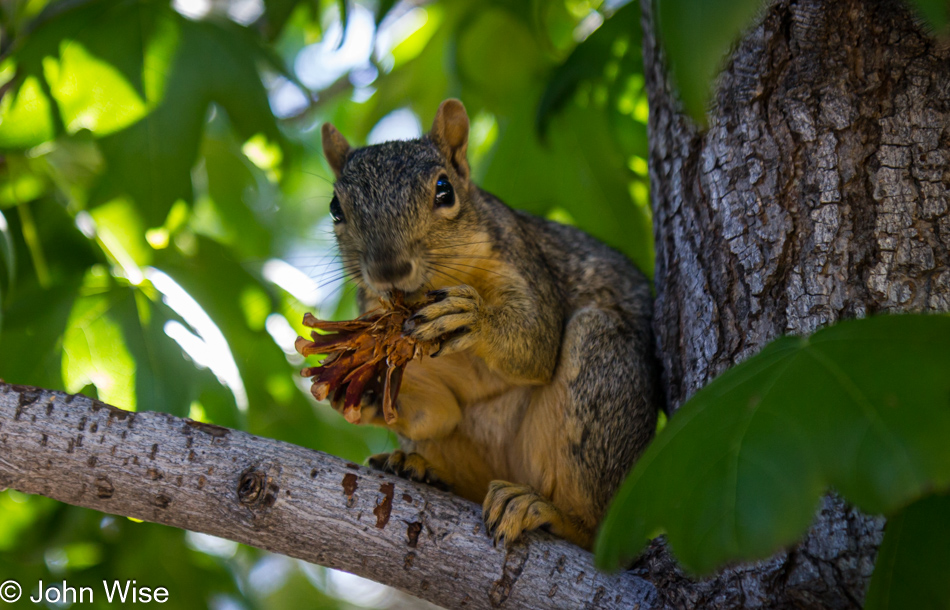
While still at Wikipedia, I thought I’d look up something interesting about the squirrel, and well, there’s little that’s really interesting about this furry creature. But then, just as I was about to turn away, I gave a second thought to its name, which in Old English was Ācweorna, that gave way in the days of Middle English to Aquerne; both words are cognates of the German word Eichhorn. Look closely at the English variants, and you should be able to see the similarity. Obviously, we are not near squirrel yet, which would be influenced by the Anglo-Norman French word esquirel, which came from the Latin sciurus (which in turn is derived from Greek skíouros, which means shadow tail). For those of you who might not know much about the English language you speak, its origins are mostly found in French and German, with nearly nothing remaining of the original forms of English in the modern tongue we use.

Going out on a limb here by claiming this might be a magenta strawflower.
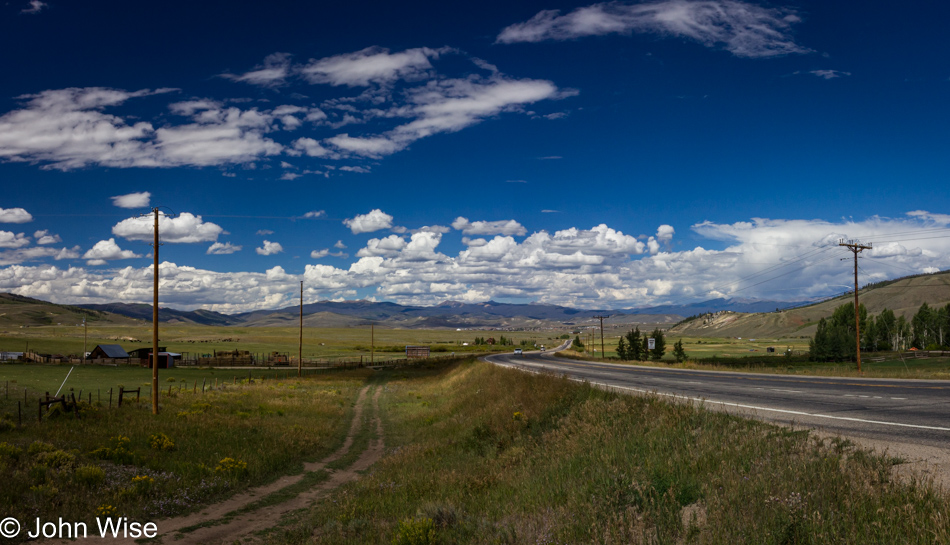
It was now time to head up into the mountains, the Rocky Mountains National Park, to be precise. For one reason or another, we opted to travel the southern boundary and enter through the western gate. Maybe it was meant to facilitate a loop around and through the park, but without afternoon photos, I wasn’t able to decide with any certainty. What I am confident about is that we had beautiful weather for our visit.
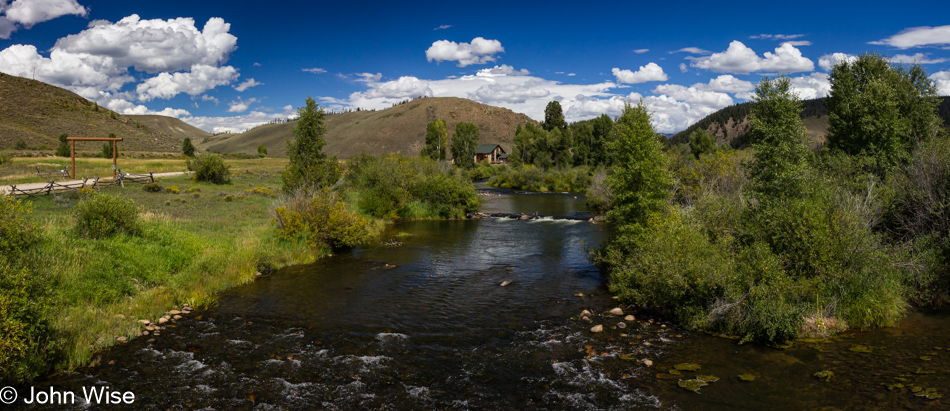
I wanted to believe that this is the Colorado River but after chasing the road using Street View, I can’t figure out anything about the location.
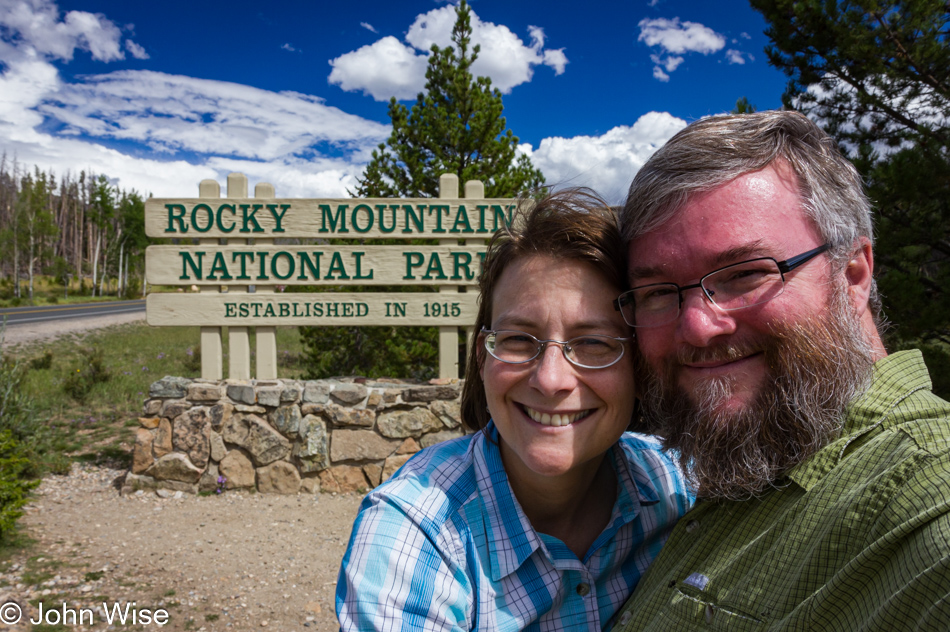
Entering the Rocky Mountain National Park via Trailridge Road on the west side of the park just north of Grand Lake. I’m certain about this fact, as the rock layout of the foundation of this sign matches the Street View capture. Looking back at this 10-year-old image of me, I can better recognize the amount of gray hair that was appearing and realize that it didn’t happen as quickly as I sometimes fear. As for Caroline, and I’m sure she’ll disagree, she looks exactly the same, though she’ll point out that she now has about 30 gray hairs at the center front of her hairline; big deal because I now start looking like Santa Claus.
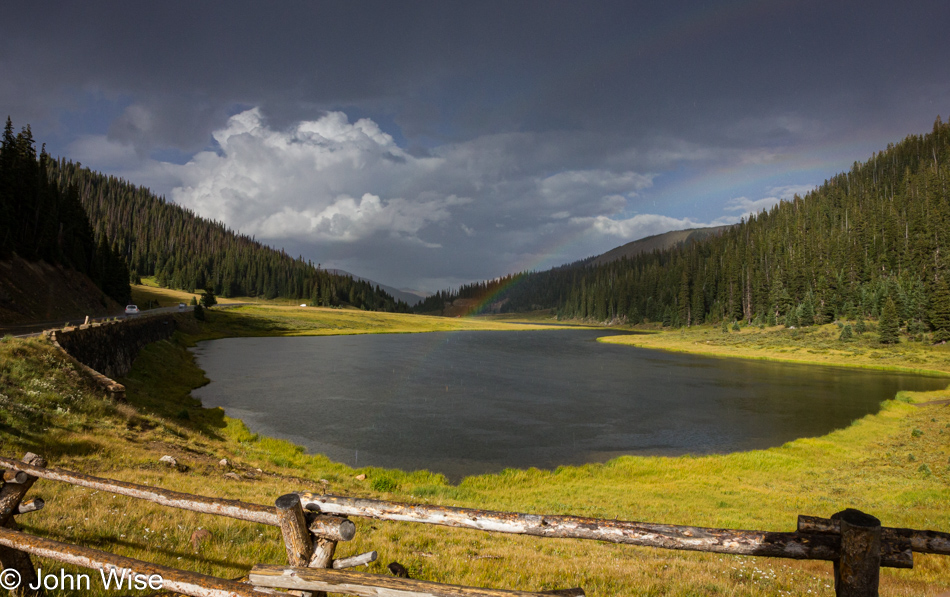
Thanks to the good ‘ol internet for reminding me that we are at the Continental Divide in front of Poudre Lake. By the way, you may notice here that the weather is changing. Look closely and you might catch a whisp of a rainbow that’s over the small lake right near the short here.
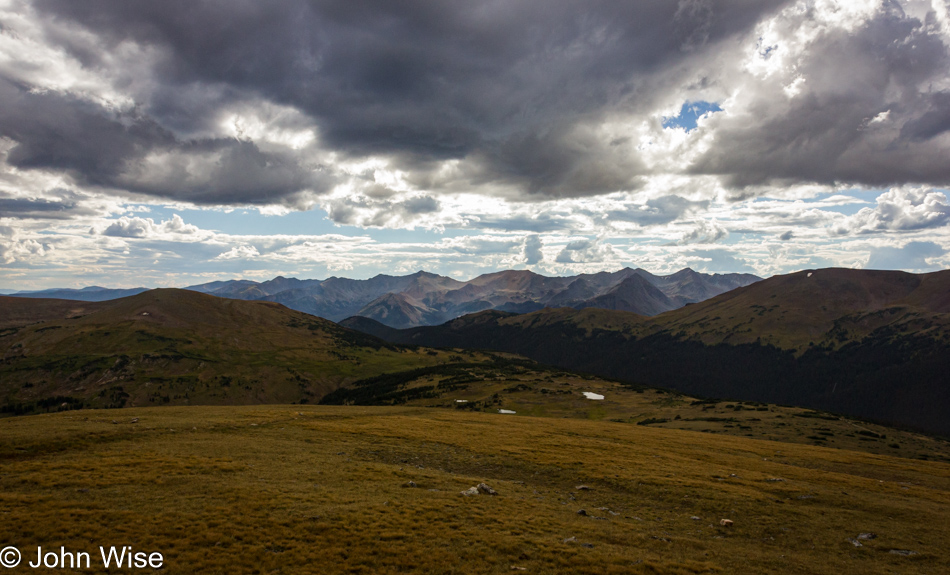
We are in front of the Alpine Visitors Center
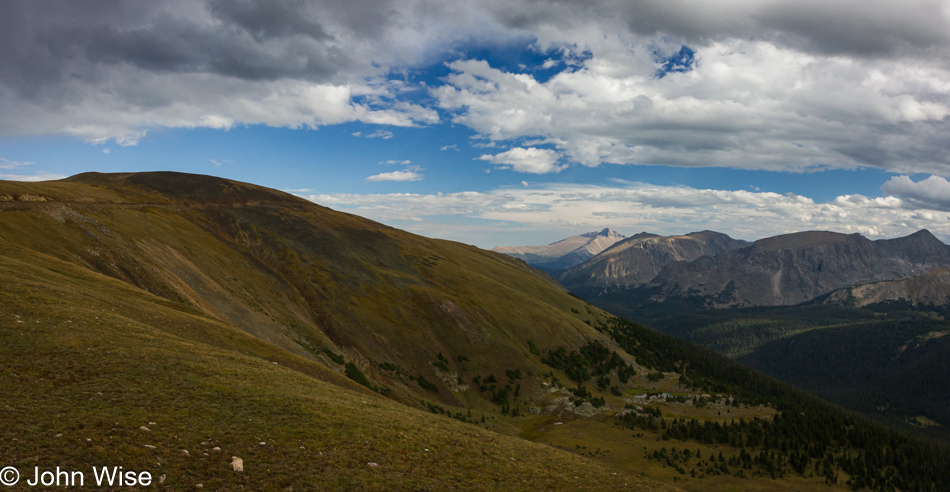
Hunting for sunshine and blue skies limits the direction I’m taking photos. With the change in conditions, you can bet we’ll have to plan on a return visit to capture the vistas under optimal conditions.
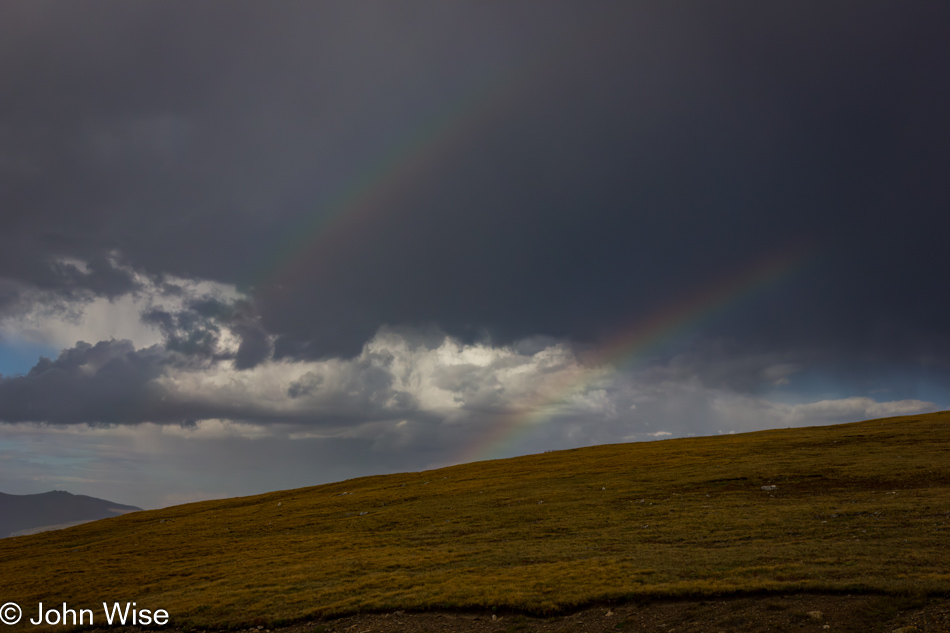
While faint, there’s nothing wrong with double rainbows to brighten the heavy clouds marching in.
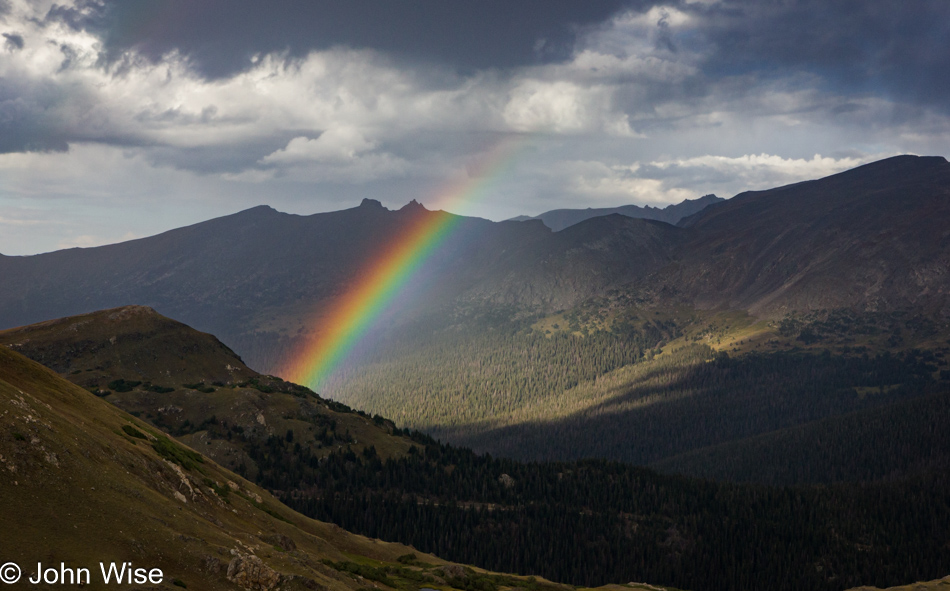
We never expected that our visit would turn into a trip to the Rainbow Rockies.
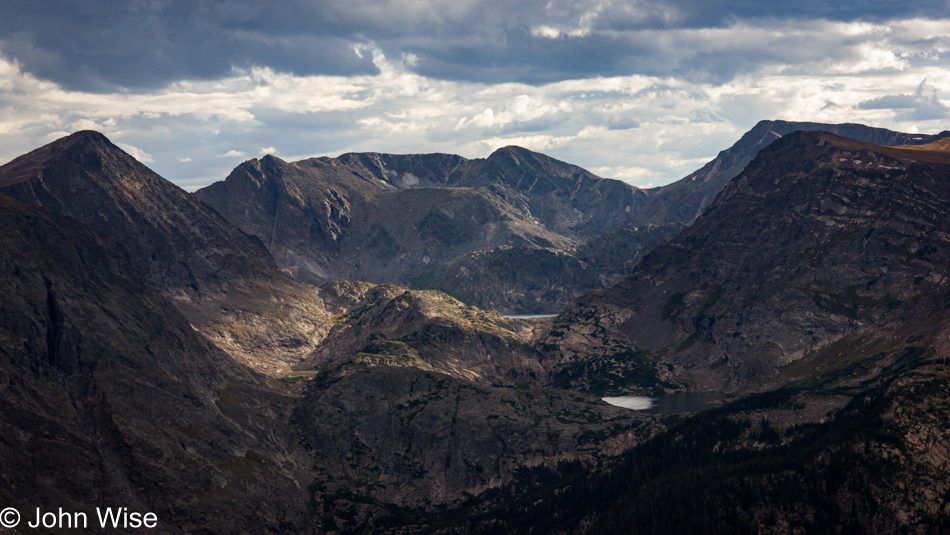
The elevation up here is no joke, with me getting dizzy every time we step out of the car. Hopefully, upon our return on a future visit, we’ll opt to stay in Estes Park in order to acclimatize to the heights of this national park.
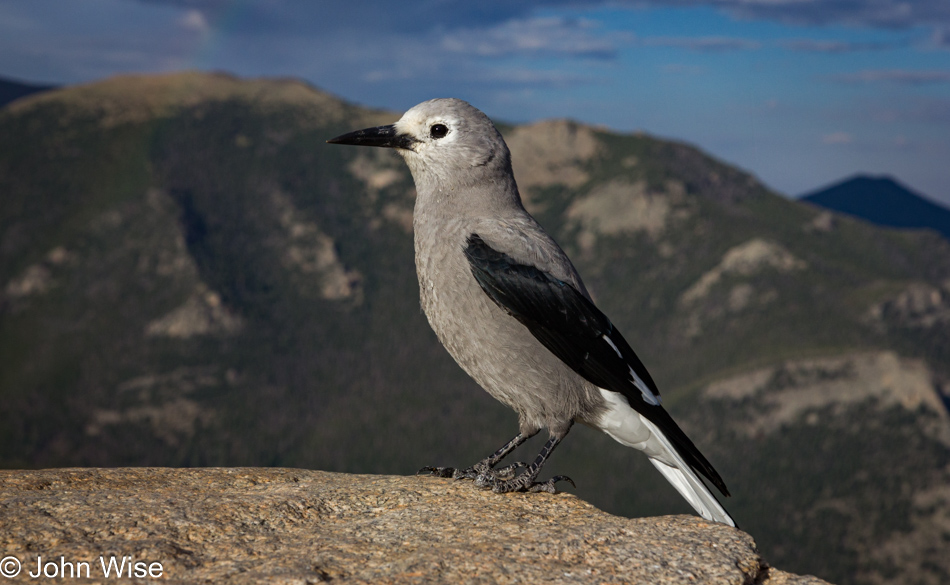
What a perfect example of the Clarks Nutcracker that posed for minutes, striking various stances for me to capture its elegance.

To the astute reader, you might recognize that this photo of Caroline earning her Junior Rangers badge was at the Kawuneeche Visitor Center, which is near where we entered the park, and that would be correct. It’s placed here at the end of the post, as I felt it was a good closing for this entry.
Following our visit to the Rocky Mountains, we likely drove back to Denver via Estes Park and then headed towards our hotel in Aurora. We dined at a Ted’s Montana Grill around the corner from the ALoft at the Airport. Afterward, we returned to our room because, at the break of dawn the next day, we were catching a flight back to Phoenix so that Caroline could go directly to work.
